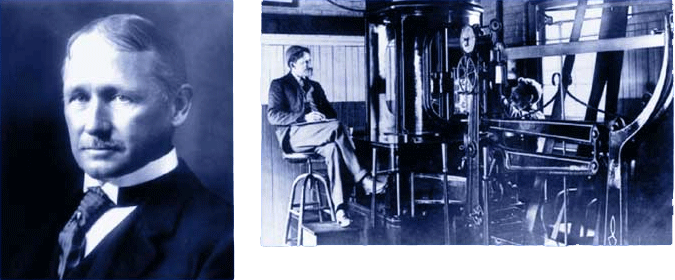
As new ways of work are evolving, such as the adoption of cross-functional teams, and distributed/virtual work environments, companies need to find new ways to manage employee performance.
For nearly everyone working today, annual employee evaluations are as status quo as coffee breaks and bi-weekly paychecks (direct deposited of course). But have you ever wondered what incited this practice in the first place?
Employee Evaluations – The Early Years

At the turn of the 2oth Century, a mechanical engineer named Frederick Winslow Taylor (regarded as the father of scientific management) wanted to improve industrial efficiency. He measured every part of an employee’s job, then ranked each worker’s output individually and rewarded them accordingly. His system consisted of these main tenets:
1) Scientifically select, train, and develop each employee. Employees used to figure out how to perform basic job functions by watching and being trained by others. Industrial jobs were relatively simple and repetitive, but also dangerous — especially while new employees were still acclimating to their roles and responsibilities.
2) Provide detailed instruction and supervision of employees. In addition to training, employees had to be closely (micro)managed to increase productivity and limit accidents.
3) Divide work nearly equally between managers and workers.Managers applied scientific management principles to planning the work and the workers perform the actual tasks.
4) Enforcement. (More micromanagement…) A manager’s job was to enforce the standards from on high, which included which tools employees were to use and what working conditions were considered normal. This was based on the presumption that most laborers were too stupid to understand what they were doing.
Taylor also created a practice that is still in use today, linking pay to productivity. He paid his workers more than other factories that did not implement his scientific management practices. Taylor’s system was eventually accepted and used widely, mainly because production actually improved.
New World, Old Methods
Unfortunately the predominant management practices still in wide use today were designed during a time when the attributes of self-direction and creativity were unnecessary and even undesirable in the workforce. This was at a time when what was most valued was producing outcomes that were very mechanistic and repeatable, where efficiency was paramount, and where people were easily replaceable.

Today, knowledge workers sit at desks in completely safe environments where the largest risk of injury is getting carpel tunnel syndrome from playing too much foosball. Training no longer has to be so scientific, since people are often hired for their entrepreneurialism – getting from A to B in whatever way works best.
Command and control management, stack ranking performance appraisals, and systems of reward and punishment (the so called carrot and stick which include financial incentives like bonuses and awards) are outdated.
While these practices are effective at driving minimally competent work and keeping people in line, they’ve been scientifically proven to decrease performance when it comes to creative, innovative knowledge work. This is the very type of work that we most need to succeed in today’s marketplace.
The Future Is Now
Work is shifting dramatically these days. For starters, no one sets annual goals anymore. Now they are monthly or even weekly. Additionally, some companies are structured so that people work remotely or on multiple teams. Their main managers don’t have natural interactions like running into employees in the hallway and using that as an opportunity to initiate conversation.
Due to these changes it is difficult for many managers to have a complete picture of what every employee is working on. For example, one of my employee’s works closely with marketing, sales, and our customer success teams. Without a cadence of weekly communication, the three individual managers would not be able to track his performance, let alone provide the support or coaching he might need to improve.
Few managers accurately know their team members’ performance when that employee is involved in many other teams, often doing work the manager doesn’t see or even understand. But even a regular employee who works in-house, on one team and for one manager, cannot be engaged by that manager sporadically.
That is why some of the world’s best companies are no longer using forced rankings and defining performance by a single number. Consulting firms Deloitte and Accenture, global health services client Cigna, and even GE (the original proponents of stack rankings) all announced changes to their performance management systems. These companies are now focusing on ongoing, quality conversations between managers and their teams.
Standard performance reviews, delivered once a year, are just not relevant to the ways we work anymore. Business moves far more quickly than it used to and employees are demanding autonomy, feedback, and coaching to perform purposeful excellent work. There has to be a better way.
This post first appeared on 15five.
Get the TNW newsletter
Get the most important tech news in your inbox each week.





